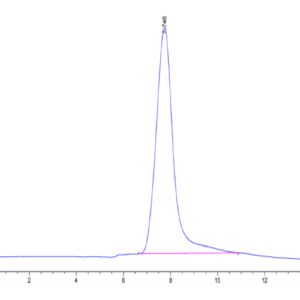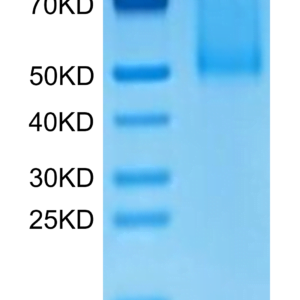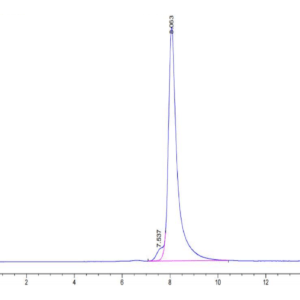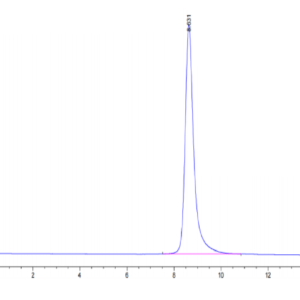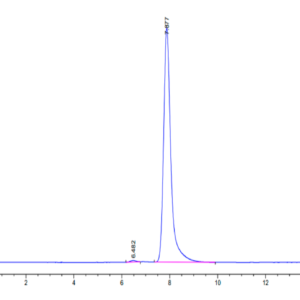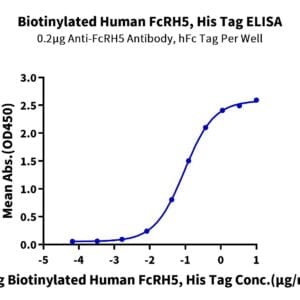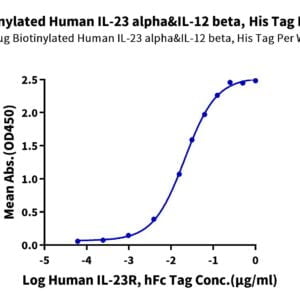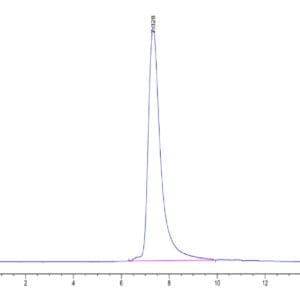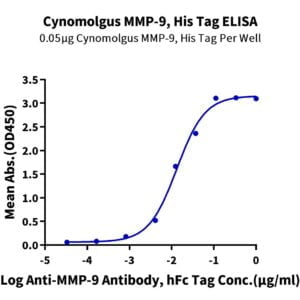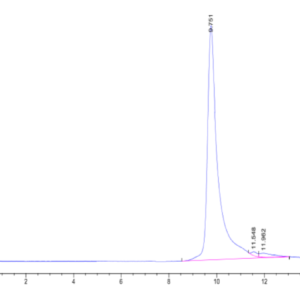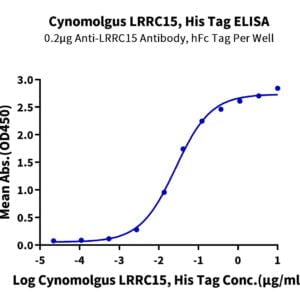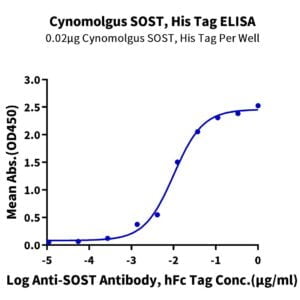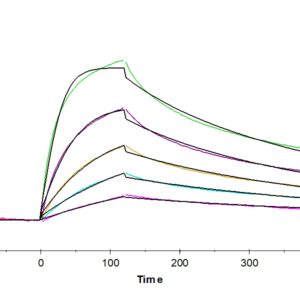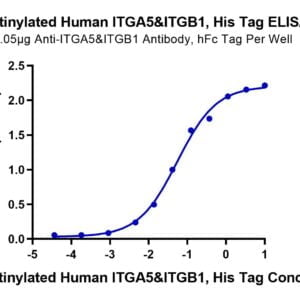| Weight | 1 lbs |
|---|---|
| Dimensions | 9 × 5 × 2 in |
| accession | NP_034270 |
| express system | HEK293 |
| product tag | C-His |
| purity | > 95% as determined by Tris-Bis PAGE;> 95% as determined by HPLC |
| background | Erythropoietin‑producing hepatocellular carcinoma cell surface type‑A receptor 3 (EPHA3) has been found to promote the proliferation and survival of prostate cancer (PCa) cell lines and prostate tumor development in nude mice. The interaction of AR and SP1 contributes to regulate EPHA3 expression, and the SP1 binding sites (‑295~‑261) in the EPHA3 core promoter region is crucial to the regulation of EPHA3 expression in response to androgen hormone stimuli. |
| molecular weight | The protein has a predicted MW of 59.7 kDa. Due to glycosylation, the protein migrates to 70-80 kDa based on Tris-Bis PAGE result. |
| available size | 100 µg, 500 µg |
| endotoxin | Less than 1EU per ug by the LAL method. |
Mouse EPHA3 Protein 3482
$270.00 – $900.00
Summary
- Expression: HEK293
- Pure: Yes (HPLC)
- Amino Acid Range: Glu21-His541
Mouse EPHA3 Protein 3482
| protein |
|---|
| Size and concentration 100, 500µg and lyophilized |
| Form Lyophilized |
| Storage Instructions Valid for 12 months from date of receipt when stored at -80°C. Recommend to aliquot the protein into smaller quantities for optimal storage. Please minimize freeze-thaw cycles. |
| Storage buffer Shipped at ambient temperature. |
| Purity > 95% as determined by Tris-Bis PAGE |
| target relevance |
|---|
| Erythropoietin-producing hepatocellular carcinoma cell surface type-A receptor 3 (EPHA3) has been found to promote the proliferation and survival of prostate cancer (PCa) cell lines and prostate tumor development in nude mice. The interaction of AR and SP1 contributes to regulate EPHA3 expression, and the SP1 binding sites (-295~-261) in the EPHA3 core promoter region is crucial to the regulation of EPHA3 expression in response to androgen hormone stimuli. |
| Protein names Ephrin type-A receptor 3 (EC 2.7.10.1) (EPH-like kinase 4) (EK4) (hEK4) (HEK) (Human embryo kinase) (Tyrosine-protein kinase TYRO4) (Tyrosine-protein kinase receptor ETK1) (Eph-like tyrosine kinase 1) |
| Gene names EPHA3,EPHA3 ETK ETK1 HEK TYRO4 |
| Protein family Protein kinase superfamily, Tyr protein kinase family, Ephrin receptor subfamily |
| Mass 9606Da |
| Function Receptor tyrosine kinase which binds promiscuously membrane-bound ephrin family ligands residing on adjacent cells, leading to contact-dependent bidirectional signaling into neighboring cells. The signaling pathway downstream of the receptor is referred to as forward signaling while the signaling pathway downstream of the ephrin ligand is referred to as reverse signaling. Highly promiscuous for ephrin-A ligands it binds preferentially EFNA5. Upon activation by EFNA5 regulates cell-cell adhesion, cytoskeletal organization and cell migration. Plays a role in cardiac cells migration and differentiation and regulates the formation of the atrioventricular canal and septum during development probably through activation by EFNA1. Involved in the retinotectal mapping of neurons. May also control the segregation but not the guidance of motor and sensory axons during neuromuscular circuit development. |
| Catalytic activity #N/A |
| Subellular location [Isoform 1]: Cell membrane ; Single-pass type I membrane protein .; [Isoform 2]: Secreted . |
| Tissues Widely expressed. Highest level in placenta. |
| Structure Heterotetramer upon binding of the ligand. The heterotetramer is composed of an ephrin dimer and a receptor dimer. Oligomerization is probably required to induce biological responses. Forms a ternary EFNA5-EPHA3-ADAM10 complex mediating EFNA5 extracellular domain shedding by ADAM10 which regulates the EFNA5-EPHA3 complex internalization and function. Interacts with NCK1 (via SH2 domain); mediates EFNA5-EPHA3 signaling (By similarity). Interacts (phosphorylated) with PTPN1; dephosphorylates EPHA3 and may regulate its trafficking and function. Interacts (phosphorylated) with CRK; mediates EFNA5-EPHA3 signaling through RHOA GTPase activation. |
| Post-translational modification Autophosphorylates upon activation by EFNA5. Phosphorylation on Tyr-602 mediates interaction with NCK1. Dephosphorylated by PTPN1. |
| Target Relevance information above includes information from UniProt accession: P29320 |
| The UniProt Consortium |
Data
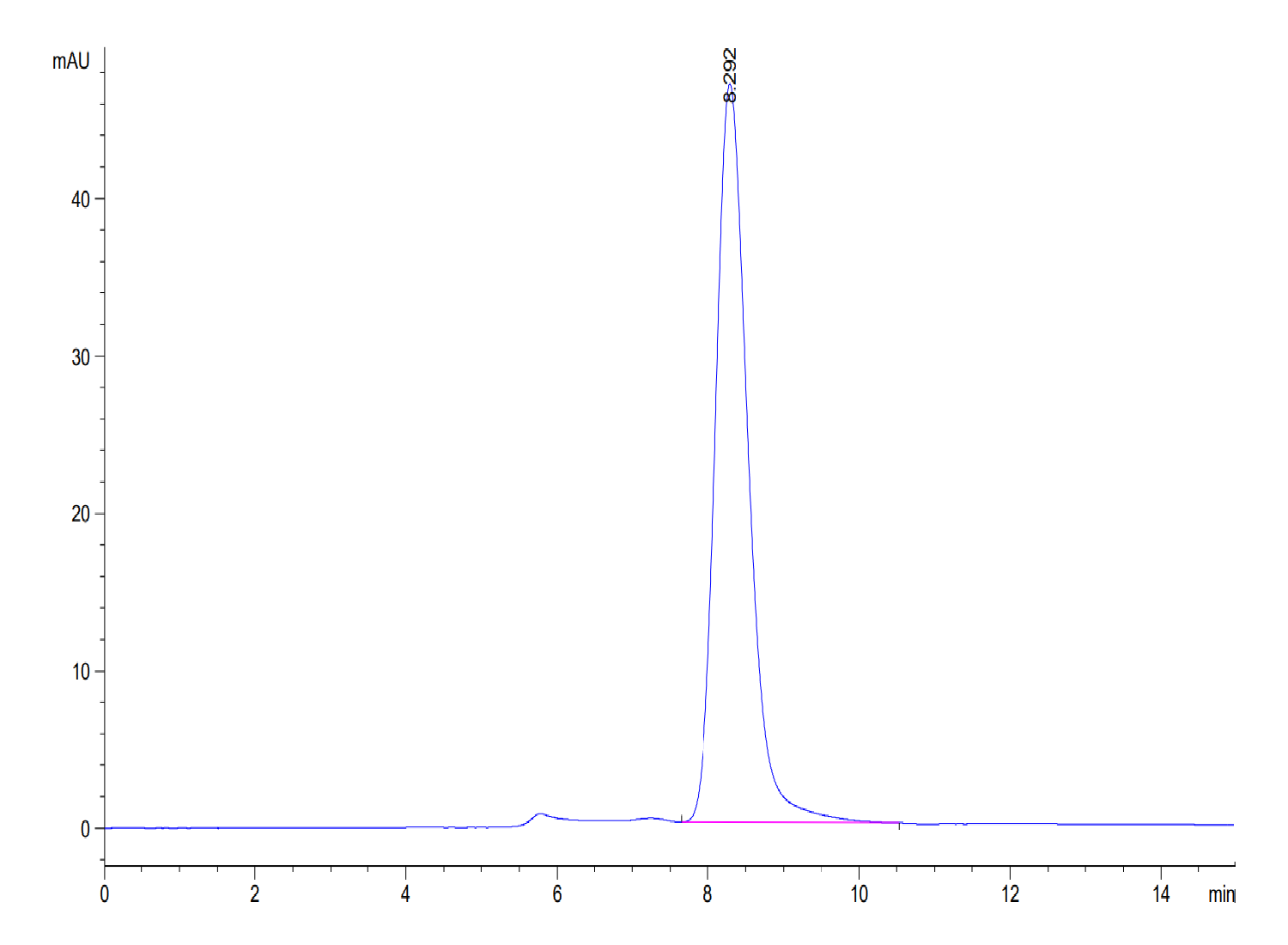 |
| The purity of Mouse EPHA3 is greater than 95% as determined by SEC-HPLC. |
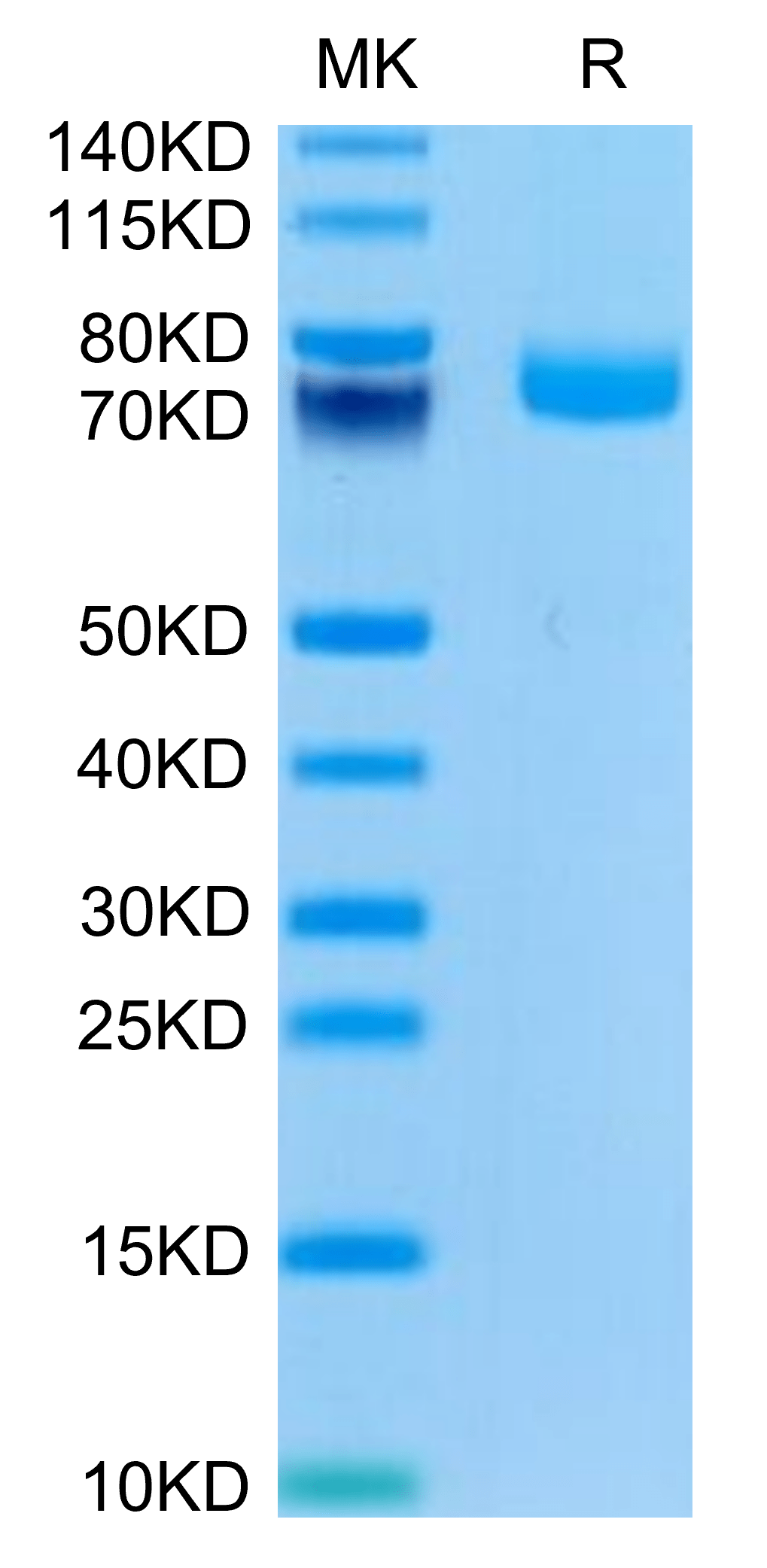 |
| Mouse EPHA3 on Tris-Bis PAGE under reduced condition. The purity is greater than 95%. |
Publications
Publications
| pmid | title | authors | citation |
|---|---|---|---|
| We haven't added any publications to our database yet. | |||
Protocols
| relevant to this product |
|---|
Documents
| # | ||
|---|---|---|
| Please enter your product and batch number here to retrieve product datasheet, SDS, and QC information. | ||
